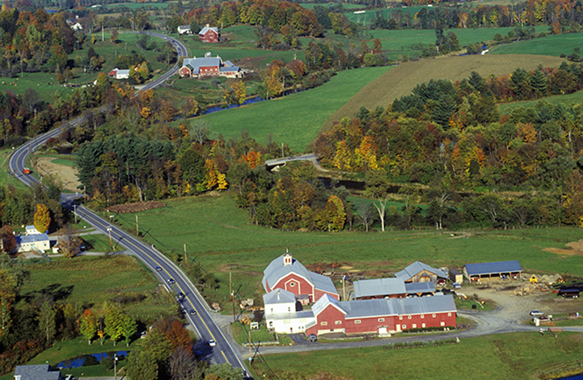By William C. Anderson | Originally Published at TruthOut. January 16, 2015 11:45 AM EST | Illustration Credit; Lauren Walker / Truthout
You’ve probably seen a photo of a lynching before. You’ve probably seen a video of a Black person fighting, being beaten or killed. Societally, many have grown accustomed to feeling some sense of ownership around Black bodies in life and in death, partially through widely disseminated visuals of brutality against Black people. These include imagery of the dead, brutalized or dying Black body.
Consider lynchings. Eighty-four years ago, 18-year-old Thomas Shipp and 19-year-old Abram Smith were lynched in the town center of Marion, Indiana. An angry mob had broken into the jail to murder the three Black men there, one of whom, 16-year- old James Cameron, escaped.
An iconic photo was taken of the lynching that would go on to inspire the classic Billie Holiday song, “Strange Fruit.” The writer of the lyrics, Abel Meeropol, said that the photograph “haunted” him “for days,” and he wrote a poem about it. Among the vivid words: “Pastoral scene of the gallant South/The bulgin’ eyes and the twisted mouth.”
I saw this photo dozens of times throughout my childhood in the Black history books my parents made me read as a child, many of which were filled with photos of lynchings. I remember my parents saying “that can still happen to you,” as I looked on aghast.
The photos scared me, but on the rare occasion they reappeared in school lessons, my predominantly White classmates usually said “ewww,” or laughed. The photos that served as warnings for Black children were used as mementos and retrograde shareable content among White people. Black people were and still can be regarded as things to be taken apart and passed down.
A Tennessee medical services official illustrated this much around this time last year, when he threatened Black people filing a complaint against emergency responders by telling them he owned a “strap” of a Black man’s back – passed down from a 1896 lynching. Even without a member or physical piece, photos can serve this objectifying purpose, in certain hands; a visual, a photo or film can instill and reproduce violence for ages to come.
This leads me to think about Eric Garner – a Staten Island family man who was illegally choked to death on camera by Officer Daniel Pantaleo. The video recording of this incident amassed millions of views online, adding to the growing furor around the country over unpunished police violence, vigilante killings, and other crimes against Black people. Garner’s last words in the video have become lyrics to protest chants and a slogan for discontent.
However, while it serves to inform, illustrate and illuminate the injustice of police violence, this video imagery is also extremely disturbing. It triggers many people, including myself. Media surrounding death and injustice are all around us, and they’re often disseminated in careless practices that are empty in meaning or purpose – or used at odds with the interests of those who are depicted. For instance, what does it mean for someone who has an anti-Black gaze or a male gaze to decide how to share an image of a dead Black person or a battered woman on social media?
The video footage of the shooting of 12-year-old Tamir Rice, footage of John Crawford’s shooting in an Ohio Walmart and footage of Mariam Carey being chased before she is ultimately shot to death are all emotionally devastating. When I see the video of Marlene Pinnock being beaten by an officer on a California highway, I feel angered – yet I also find myself wondering about the effects of the wide dissemination of visual representations of violence against a Black woman, even when it is also considered beneficial evidence.
Though these images highlight and often expose injustice, they show human beings at some of their most vulnerable moments. Personally, if I am ever murdered or beaten, I don’t want it to become a public spectacle for critique, entertainment and observance. We consume these images for public debate and recycle them as energy to push our protests, whether it is for a protest sign or to hear Peter King say, “If you can’t breathe, you can’t talk.” In our observance of incidents, we rarely stop to ask ourselves what the victim would think of our gaze.
Media from what many in the United States consider the “third world” are also treated with nonchalance: Images from wars and conflicts often end up passively being shared as if they’re going to encourage people to react more than they would if they just read about the given atrocity. Anytime Israel attacks Palestine, images of dead children spread quickly across social media. It feels like a knee-jerk reaction for people to hold it in front of our faces to move people to some desired action.
On another level, images of lynchings are frequently used as historical markers for comparative frameworks, drawing sometimes-forced comparisons with images of today’s brutalities, which often look completely different. Recently at the University of California, Berkley, an artists’ collective took it upon themselves to hang effigies of lynched Black people around the campus. Though the group meant well, according to their statement, they ended up offending many people and causing some anxiety.
Dead Black people are not ornaments to be put up and taken down for every activist need, purpose and point. Treating those who have come before us as such might reinforce our objectification and further cement our disposability in public consciousness.
In a more general sense, Black people often serve as a go-to for death comparisons. The phrase “lynch mob” and the term “lynching” are often thrown around inappropriately, passing on a carelessness and disrespect for the dead that seeps into the present.
Black people whose lives have been taken become a commons of sorts: Their bodies are utilized as signs of solidarity, collective struggle and rallying points, and also as media commodities. We must be aware that this metamorphosis of their bodies into perdurable tools puts us at risk of desensitizing ourselves to their fatalities.
This trauma of public repetition is something about which Michael Brown’s family have spoken out, though their words have been ignored by many. In an interview with the Riverfront Times they made it clear:
First, that they would like anyone who is sharing photos of Brown’s lifeless body laying in the middle of Canfield Drive to take them down. Right now they’re everywhere – on Twitter, Facebook, Instagram, YouTube, hashtagged with Brown’s name. Celebrities like Souljaboy are sharing photos of the body.
‘We don’t want that out there,’ said Eric Davis, Brown’s cousin. ‘His body was in the street for hours.’
Yet the media experience little accountability, and TV shows air footage of people’s deaths carelessly, sometimes without permission. People will even stage fake deadly situations to take advantage of emotions and raise awareness. Who we are societally is engrained in how we approach this dilemma of the imagery of death, and the suffering around it. It doesn’t just affect Black people or one gender – though White supremacy ensures that Black people’s images in particular are rendered more exploitable.
As I am writing this, pictures of charred bodies from a terrorist attack in Nigeria have just appeared on my Twitter timeline. It’s never-ending. It’s up to us to come to the realization that the people I mentioned above and others like them had real lives.
We run the risk of reducing them to just a death and erasing the beautiful existence many of them had prior to the deadly moments that introduced them to us all. Although these images were often originally intended to demonstrate the gravity of the deaths of those depicted, the quick and careless ways in which they are used often indicate how little this society thinks our dead are worth.
William C. Anderson is a freelance writer. Follow him on Twitter @Williamcson.
Copyright, Truthout.org. This piece was reprinted by EmpathyEducates with permission. It may not be reproduced in any form without permission or license from the source. We thank the Author, William C. Anderson and TruthOut for a heartfelt and insightful essay.












Leave A Comment